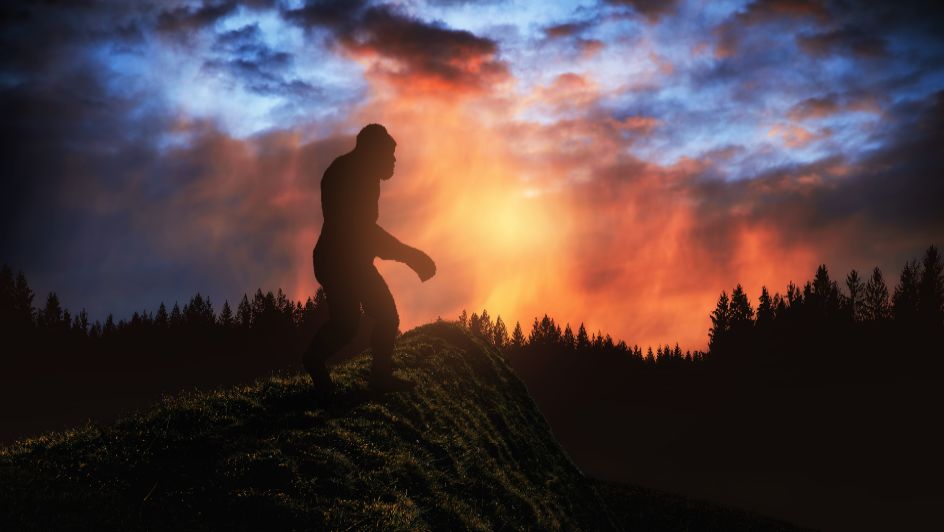#ThrowbackThursday – 20 October

In the words of children’s author Dr Seuss, “Fantasy is a necessary ingredient in living; it’s a way of looking at life through the wrong end of a telescope.”
Ours is a world of conflicts and hardships aplenty. It is also a world of realism and knowledge, both of which contain many gaps that can be filled by fantasy. Through fantasy, it allows us to view the world in different ways, to look beyond its conflicts and hardships, and see its beauty and wonders with crystal-clear clarity.
On that note, take a look at these three events that went down in history on 20 October:
1955 – The Last Chapter
A year after publishing “The Two Towers”, J. R. R. Tolkien published the third and final volume of “The Lord of the Rings”.
Dubbed “The Return of the King”, it was published in 1955 by George Allen and Unwin in the United Kingdom. It details two important stories: the remnants of the Fellowship leading Men in one last stand against Sauron and his dark forces, and of the final, perilous hurdles in Frodo Baggins and Sam Gamgee’s journey to Mount Doom in order to destroy the One Ring.
Spoilers ahead, folks: the Ring is destroyed after a scuffle between Frodo and Gollum, Sauron is defeated forever, Aragorn is crowned as the king of Gondor (hence the name “The Return of the King” – Tolkien initially wanted it to be called “The War of the Ring” so as to not spoil the plot, but his publishers overrode his decision), and the Hobbits return home to the Shire (now under Saruman’s control, but they soon manage to get rid of him).
What makes the story poignant is that Frodo – having undergone immense suffering for his burden of being the Ringbearer – leaves Middle Earth for the Undying Lands with Bilbo, Gandalf and the Elves, while Sam returns to his family in the Shire. Many probably expected a happier ending, as many fantasy novels and fairytales are wont to do, but the bittersweetness of Frodo’s departure in order to find peace is quick to reinforce the realism of how dealing with conflict can often turn out.
Luckily for readers, Tolkien provided enough chronological notes and other exciting material – histories of the various races, languages, family trees and so on – in the appendices to lessen the pain and to fuel their imaginations about Middle Earth even more.
Today, “The Return of the King” – and indeed “The Lord of the Rings” as a whole – is considered a masterpiece of epic literature, continuing to entertain and inspire generations of readers across the globe.
1967 – Bigfoot Hits the Big Time
Fifty-five years ago, footage showing what appears to be the world’s most elusive cryptid was filmed.
For centuries, people have claimed to have seen a tall, hairy, ape-like creature roaming the woodlands and forests in North America, leaving abnormally large footprints in its wake. These sightings gave rise to the legend of “Bigfoot” (or Sasquatch), a type of cryptid whom many enthusiasts believe exist while others – mainly scientists, anthropologists and zoologists – believe to be nothing more than a myth.
Riveted at the prospect of finding Bigfoot, two Americans – Roger Patterson and Robert “Bob” Gimlin – set out on horseback alongside Bluff Creek in Northern California, where the famed cryptid (and its footprints) was allegedly spotted multiple times over the years.
As they rounded a tree by the creek, Patterson and Gimlin’s horse stopped in their tracks, and the men saw why: a darked-haired creature resembling a huge, bipedal ape was on the other side of the bank, seemingly drinking water from the creek. Grabbing his camera out of his saddlebag, Patterson jumped off his horse and ran towards the creature to film it.
Seeing this, the creature immediately strode away in big strides, leaving behind equally big footprints. Just before it disappears into the wilderness, it turns and looks directly at the camera.
The footage, lasting 59.5 seconds, immediately caused a sensation – and controversy. Folks who reportedly saw Bigfoot in the past concurred that this creature was indeed Bigfoot itself (and a female one at that, if its prominent mammary glands were anything to go by). Plaster casts of the footprints seemed to solidify its very existence. However, others believed that it was a man wearing a gorilla suit, with the footage purposefully slowed or sped up to effect “Bigfoot’s” strided gait.
To this day, the footage continues to be debated: was it real or a hoax? Patterson and Gimlin maintained that it was real, although in later years Gimlin wondered if Patterson had orchestrated the “spotting” without telling him.
Whatever the case may be, the legend of Bigfoot captured the public imagination more than ever before, prompting many to make the attempt to follow the trail left behind by the elusive cryptid towards the truth.
1973 – Opening the Opera House
Only a year shy of being 50-years-old, it’s hard to believe that a memorable landmark such as the Sydney Opera House has only been in existence for nearly half a century.
Fourteen years after World War II ended in 1945, it was recognised by many people in Australia that the relatively young nation needed a creative outlet; a place where creative expression could be showcased and enjoyed by all for the betterment and enjoyment of the community.
So, designed by Danish architect Jørn Oberg Utzon, construction of a performing arts venue began in March 1959 in Sydney on Bennelong Point near the harbour. Utzon was supposedly inspired by birds when he came up with the structure’s distinct design, although many would liken it to sails or shells. At a cost of A$102 million, it suffered many setbacks, such as the weakness of the structure’s podium to the shapes of the shells; as a result, many thought that the project would never ever be completed.
But lo and behold, it was completed: on 20 October, Britain’s Queen Elizabeth II officially opened the Sydney Opera House to the public. It has since played host to countless events ranging from music concerts and theatrical performances to even body-building contests and political speeches.



















